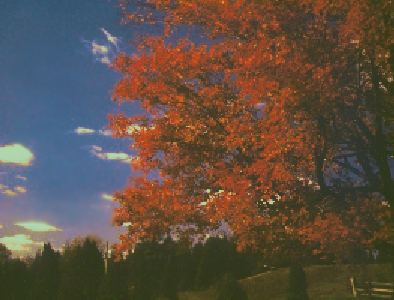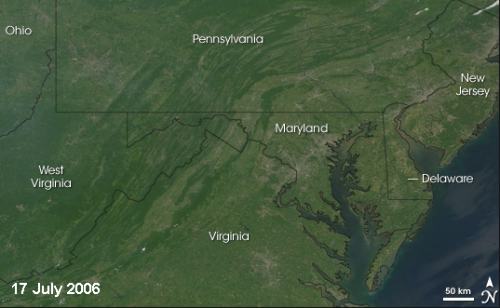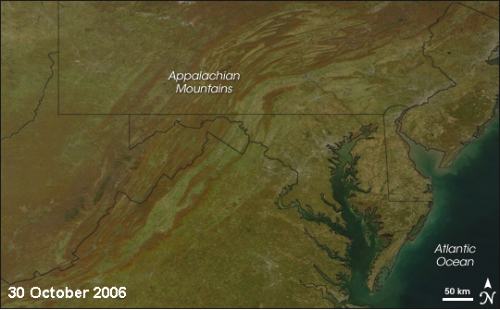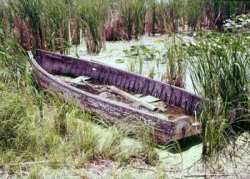 |
 |
| Home | Welcome | What's New | Site Map | Glossary | Weather Doctor Amazon Store | Book Store | Accolades | Email Us |
 | |||||||||||||
Weather Almanac for October 1998Indian Summer Brings Fall ColourYou can see it distinctly on the weather map or satellite picture hovering over eastern North America. It has been there for several days and although there are reports of higher than usual air pollution in some cities, most are enjoying the phenomenon they call Indian Summer. This large mass of high pressure has pushed its way over the Atlantic shore in the wake of a mass of arctic air which brought the first frosts to the Great Lakes and New England and has come to rest in the Ohio Valley. In contrast to its predecessor, this air mass is warm, an extension of what is known as the Bermuda High. Indian Summer days are characterized by clear skies and temperatures which are pleasantly warm during the day and refreshingly chill at night. Indian Summer carries the memories of celebrations of the harvest season, last picnics, the harvest moon, but most of all, the brilliant colours of autumn. Imagine looking across a field still strewn with stalks of now-harvested corn. There in the distance stands a small woodlot of mixed deciduous trees. Each of the species represented in the community wears its full blaze of autumnal hue. The scarlet of red maple and orange-red of the sugar maple mix with the golds of ash and yellow of birch. The perpetual green of the cedars intertwine with their deciduous neighbours, completing the kaleidoscope of colour.  Red Maple, Blue Sky by Keith C. Heidorn, |
|||||||||||||
 |
The reflection of green wavelengths of sunlight from chlorophyll in plant |
During the spring and summer months, chlorophyll is produced by the tree as emerging leaves form the great sugar factory of photosynthesis. The chlorophyll in the leaves gives them their distinct green hue. As the night gains dominance over the daylight, the production of new chlorophyll wanes and then ceases while the decomposition of the older chlorophyll continues. Eventually no more remains. Without other pigments, the leaves would pale and soon turn colourless. However, as the chlorophyll disappears, three pigments gain prominence; their colours becoming the colours of autumn.
 |
The colors may not appear as brilliant as the reds and golds seen |
Carotenoids are responsible for the yellow hues of the season as well as the coloration of carrots, corn, daffodils, rutabagas, buttercups, and bananas. These pigments assist chlorophyll in absorbing sunlight and are present all summer but only become visible when chlorophyll is no longer dominant in the leaf.
Anthocyanins are responsible for the scarlet, blue and purple hues in nature. They comprise the characteristic colours of Concord grapes, cranberries, blueberries, red apples, cherries, strawberries and plums but, unlike the carotenoids, must be produced within the leaf after the chlorophyll has declined. Anthocyanin are formed by the breakdown of excess sugars under bright light. Bright autumn days with cool nights favour the formation of anthocyanins, thus the connection between brilliant autumn hues and Indian Summer weather.
Tannins are the third prominent pigment. They contribute the brown tones to the leaves, especially those of the oak and elm. After the carotenoids and anthocyanin have decomposed, the tannins alone remain, giving the dead leaves their characteristic brown colour.
Certain colours characterize particular species. Oaks turn red, brown, or russet; hickories, golden bronze; aspen and yellow-poplar, golden yellow; dogwood, purplish red; beech, light tan; birch honey locust, and ash, yellow; and sumac, sourwood and black tupelo, crimson. Maple coloration differs within the species: red maple turns brilliant scarlet; sugar maple, orange-red; and black maple, glowing yellow; big-leaf maple, yellow-brown; silver maple, dull yellow. Leaves of some species such as the elms simply shrivel up and fall, exhibiting little colour other than drab brown. Autumn leaves of some trees such as birches, tulip poplars, eastern redbud and hickory, are always yellow, never red. The autumn foliage of a few trees, including sugar maple, dogwood, sweet gum, black gum and sourwood, are usually red but may also be yellow.

Vivid reds, purples, and crimson coloration from anthocyanins are stimulated by abundant bright sunlight and a high sugar content, while duller colours result from the effects of cloudy skies and shading. Bright sunlight is so essential for the production of the anthocyanin pigment in leaves that if a portion of the leaf is prevented from receiving sunlight before it turns red, that portion will turn yellow while the exposed part will turn red. Because carotenoids are always present in leaves, the yellow and gold colours remain fairly constant from year to year.
The extent and brilliance of autumn colours in any particular year depend on weather conditions that occur before and during the time the chlorophyll in the leaves is dwindling. Temperature and soil moisture are the main influences affecting colour intensity. Temperatures much below freezing will kill the leaf cells before they can produce these pigments, and an unusually warm spell may lower the intensity of autumn colours.
Like the weather, soil moisture varies greatly from year to year. A severe late spring or summer drought can delay the onset of autumn colour by a few weeks. A warm wet spring, favourable summer weather, and warm, sunny fall days with cool nights should produce the most brilliant autumn colours. Soil moisture may also vary with the topography, thus affecting the coloration within a small area to differing degrees.
The timing of the colour change also varies by species. Oaks, for example, change their colours long after other species have shed their leaves. Differences in the timing of colour change among species seem to be genetic and driven by daylength, thus, a particular species at the same latitude will show the colour changes in the cool temperatures of high mountain elevations at about the same time as those in warmer lowlands.

The particular combination of weather, species and other environmental factors makes each autumn unique and each forest or woodlot special. Colours may vary in shade and intensity on opposite sides of a valley or even on the same tree. Thus the infinite variety of autumn colours are born.
But soon red and yellow leaves bid farewell to the tree of their life as they begin the return to the earth. Fallen leaves run down the streets chased by a brisk wind. And then the rains come, chilling the earth and softening the dry leaves lying on the ground. The wind shifts and the cold rain becomes the first soft flakes of winter snow.
 |
To Purchase Notecard, |
Now Available! Order Today! | |
 |
 |
NEW! Now |
The BC Weather Book: |


